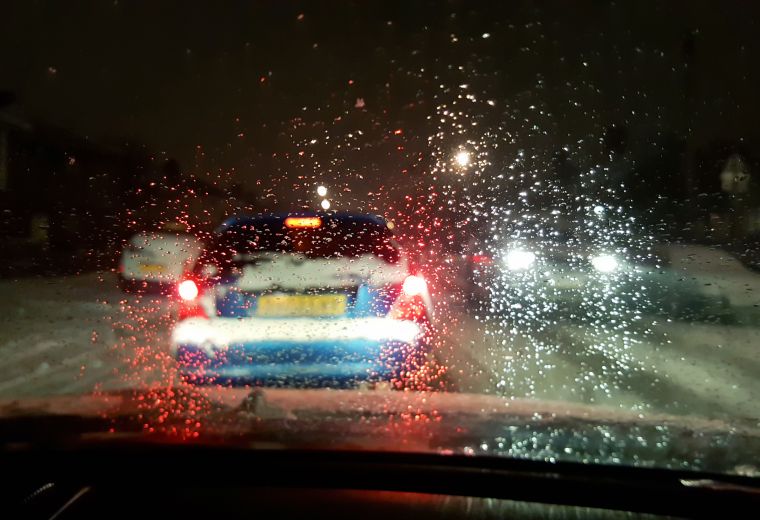Some of you might be shocked by that distance, whilst those unlucky drivers who have far-flung families could be thinking "is that it?!"
Thirty-one per cent of the 3,500 drivers surveyed say they plan on driving two hours or longer on Christmas-related journeys this festive season, with most of these (58%) saying they’ll complete two such trips before the end of the year.
Six-in-10 (62%) expect to drive up to 500 miles in total, while more than a quarter (28%) will be going 500 miles or more.
With the average driver travelling 449 miles by car, this is the equivalent to completing a round trip from Oxford to Middlesbrough, Leeds to Edinburgh or Cardiff to Huddersfield.**
This research shines a spotlight on just how important the car is to people at this time of year. We all know that Christmas is the time of year to be with family, but does that requirement put uneccesary strain on our schedules and our vehicles?
A fifth of drivers (20%) say they feel a fair chunk of Christmas is "dominated" by driving to see family and friends, while 5% – the equivalent of 1.7m motorists – say they feel a very large part of it is spent driving.
Separate RAC figures indicate that Boxing Day and the three days that follow will be the busiest for leisure journeys before New Year, with 22.8m separate trips by car predicted – an average of 5.7m every day.
- Driving home for Christmas 2019: the best and worst times to travel
- Ten signs your car isn’t ready for the winter
- Reduce the chances of breaking down in cold weather with these top tips
RAC spokesman Rod Dennis said: “Our figures suggest drivers will be seriously racking up the miles over the next few days, with Boxing Day and the 27th likely to see the bulk of the traffic as the UK’s motorways are overwhelmingly dominated by people taking leisure trips. This is very much a time of year when we tend to cover much longer distances than usual to ensure we get to spend valuable time with family and friends, regardless of where we or they live in the country, with drivers depending on their cars more than ever.
“All those extra vehicle miles will also, and unfortunately for some people, lead to plenty of extra breakdowns. The very last place anyone wants to be is stuck at the side of the road, and while our patrols will be out in force right through the Christmas and New Year period, drivers can lessen their chances of becoming a breakdown statistic by making sure their cars are up to the job of a long drive. Under the bonnet, oil and coolant should be at the right levels and when it comes to tyres, drivers should check each one has plenty of tread and is properly inflated.
“While we hope drivers’ journeys are smooth and trouble-free, our patrols will be working hard throughout Christmas to provide complete peace of mind to those who are unlucky enough to have their vehicle fail them.”
In numbers: Leisure trips to see friends and family this Christmas
Highways England’s customer service director Melanie Clarke said: “Safety is our top priority and we know from experience that almost half of breakdowns can easily be avoided if motorists carry out simple vehicle checks before setting off over this period.
“We’re asking people to be prepared too. Make sure you have everything you need for your journey should there be any delays, check before and during your journey and also make sure you’re aware of the signs and signals on motorways.”
Don’t be a breakdown statistic: the RAC’s tips to keep us all moving
Drivers should remember their ‘FORCES’:
Fuel – Don’t risk running out of fuel – top up before you set out
Oil – check it’s at the right level to reduce the chances of overheating in traffic
Rubber – tyres need to be properly inflated and in good condition to give your car a safe, sure grip on the road. Your windscreen wipers also have to work extra hard in cold and wet conditions
Coolant – this does a vital job in ensuring the engine runs at the right temperature. If it’s not between the ‘min’ and ‘max’ levels, this could be the sign of a problem so contact a good garage without delay
Electrics – you’ll need your lights on during any heavy downpours and of course during the shorter days – so check they are all working. The electrics also control your indicators and windows, so check there are no problems
Screenwash – helps keep your windscreen clear
The RAC has put together a comprehensive guide on preparing for driving in the winter, including how to avoid breakdowns. The myRAC app, free to download for iOS and Android devices, also offers up-to-the-minute traffic information and smart route planning guidance.
How far do you have to travel this Christmas? Is it even further than the 450 mile average? Leave a comment below.
** Based on distances provided by the RAC Routeplanner

RAC sale – up to 33% off*
• Roadside cover from £5.29 a month†
• We get to most breakdowns in 60 mins or less
• Our patrols fix 4/5 breakdowns on the spot







